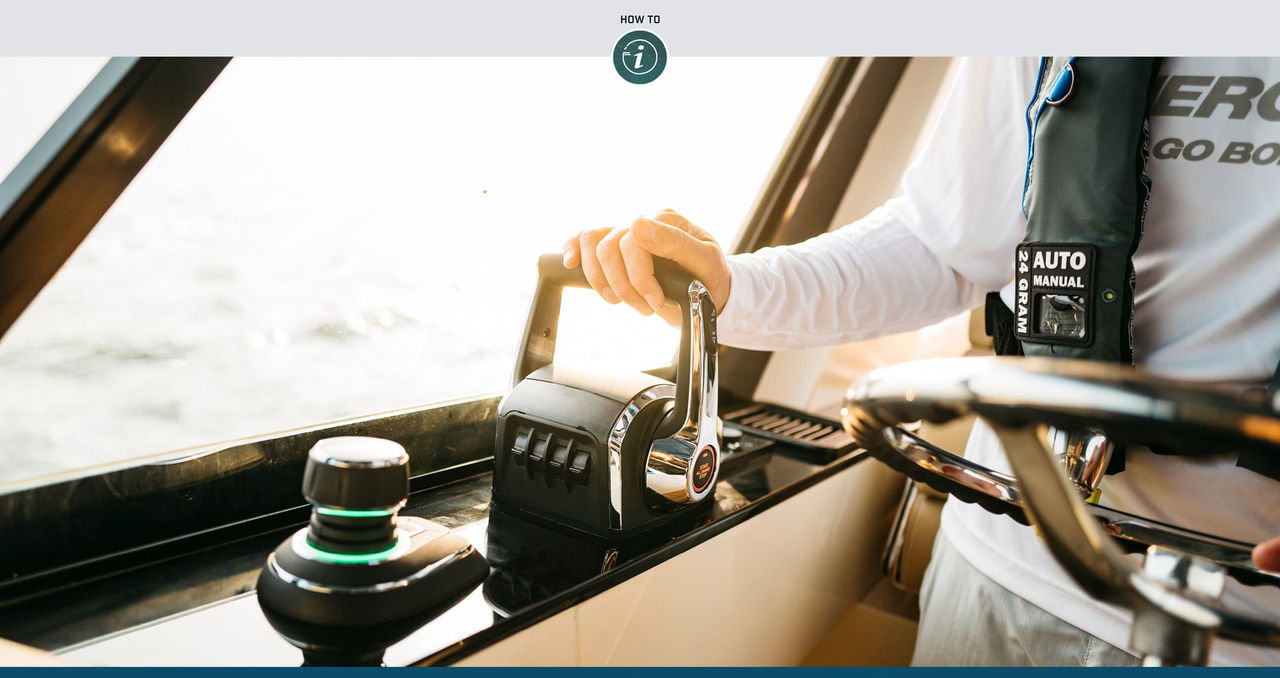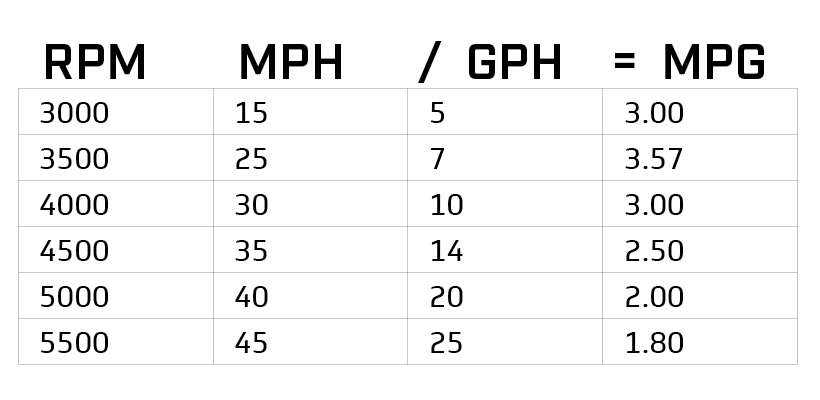Different people have different ideas of what makes an ideal cruising speed for their boats, but most captains take three major considerations into account: efficiency, comfort (considering sea conditions) and time constraints. Comfort and time constraints will vary not only by the individual but also by the goals you have for the day. If there’s a hot bite 50 miles away, for example, ambitious anglers will be apt to lean hard on the throttle. If you’re out for a cruise to a waterfront restaurant with the family and the seas are choppy, setting a slow, mellow cruise doesn’t have any downside. That leaves one consistent factor when considering which cruising speed is ideal: efficiency.
All boat-motor packages will have slightly different sweet spots where they burn the least amount of fuel per mile traveled. Truth be told, the very most efficient cruise is usually the slowest possible because the vast majority of the boats out there get more miles to the gallon before they ever get on plane. Of course, the average powerboater wouldn’t exactly call putting along at displacement speeds “cruising.” So, for our purposes here, we’ll limit the conversation to the most efficient cruise while on plane.
If you have a Mercury outboard or sterndrive with SmartCraft® and Active Trim, you’re in luck. Finding the most efficient cruise will simply be a matter of bringing the boat on plane, letting Active Trim do its job and then adjusting the throttle until you see the highest mpg displayed on the SmartCraft-compatible gauge or display. The Active Trim system automatically adjusts trim based on speed, so it narrows down the variables to how much throttle you apply. With SmartCraft but without Active Trim, you can do the same thing while monitoring mpg and manually adjusting trim and throttle in small increments.
VesselView Mobile® is another helpful tool for this process. Under the My Performance Report menu in the VesselView Mobile app, you can use the performance charts to track mpg and gallons per hour (gph) at different rpm. It can help you quickly zero in on the most efficient cruising rpm. You can also rely on the Fuel Tracking feature to track current and average fuel flow. In addition to making testing easier, the Fuel Tracking feature is incredibly helpful for monitoring fuel levels and consumption out on the water, so you can plan fuel stops and ensure you’ll reach your destination.
Boats with older systems or those with engines too small to support these systems will need to do things the old-fashioned way. This will take a lot more time, and you’ll need a GPS. Starting with a full fuel tank, bring the boat onto minimal plane and record your speed for 10 minutes. Be sure to go in opposing directions for half of the time and average the speeds you see while going in each direction, to account for the effects of wind and current. Then refill the fuel tank and record how much fuel it takes. Head back out and repeat the process, this time running the boat 500 rpm faster (If you have a small outboard with no rpm gauge, you’ll have to use throttle increments). Continue until you’ve reached full throttle.
Trim tabs are a variable that’s difficult to account for with this analog method, so it’s best to either leave them in a fully up position or to set them where you find the cruise most comfortable, understanding that this may slightly skew the results. Engine trim will also impact efficiency so try to be consistent with trim settings when comparing results at different speeds.
Now it’s time to do some math. Take a piece of paper and make a table, or use a spreadsheet, listing out the rpm, speed in mph and amount of fuel burned per hour, or gph (what you used in 10 minutes multiplied by six). Divide the speed by the gph, and you’ll get mpg. The below example should help make the math clear:
At a glance, you can see the boat’s most efficient cruise. In this case it’s 3500 rpm, when the boat is getting 3.57 mpg. And while we admittedly simplified the math here by mostly using easily divisible numbers, this example isn’t far from what you’re likely to discover with most common outboard-powered boats. Generally, once the boat is fully on plane, the most efficient cruise is likely to come in the 3000 to 5000 rpm range, with steadily deteriorating efficiency after it peaks.





